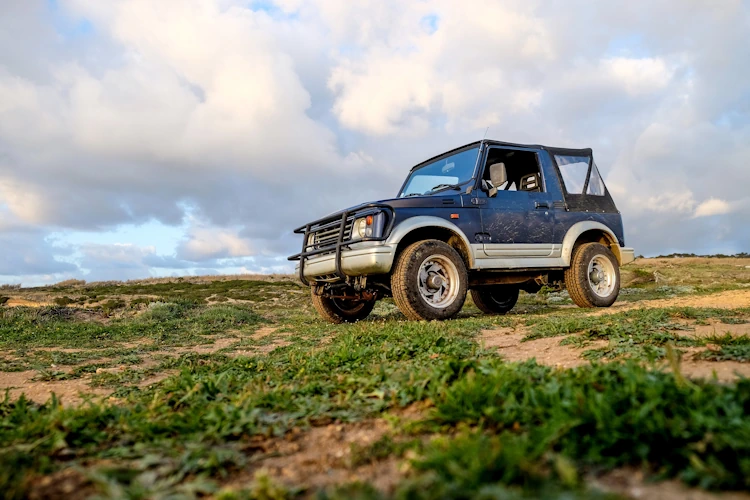Off-road enthusiasts understand the importance of outfitting their vehicles with the right equipment to tackle challenging terrains. Among the essential accessories for off-road adventures, rock sliders stand out as crucial components for protecting vehicles from damage caused by rocks, debris, and other obstacles encountered on the trail. In this comprehensive buyer’s guide, we’ll explore everything you need to know to choose the perfect rock sliders for your off-road vehicle.
Understanding Rock Sliders
Rock sliders, also known as rock rails or rock guards, are protective panels mounted along the sides of off-road vehicles to shield them from impacts during off-road driving. Designed to absorb the force of rocks and other obstacles, rock sliders play a vital role in safeguarding vulnerable areas such as the vehicle’s rocker panels, doors, and undercarriage.
Different Types of Rock Sliders
There are several types of rock sliders available on the market, each with its own set of features and installation methods:
- Bolt-On Rock Sliders: These attach to the vehicle’s frame using bolts and are relatively easy to install without welding.
- Weld-On Rock Sliders: These require welding to the vehicle’s frame for a more secure attachment and are often favored for heavy-duty applications.
- Hybrid Rock Sliders: Combining elements of both bolt-on and weld-on designs, hybrid rock sliders offer versatility and strength.
Materials Used in Rock Slider Construction
Rock sliders are typically constructed from sturdy materials capable of withstanding the rigors of off-road driving. Common materials include:
- Steel: Known for its durability and strength, steel rock sliders provide excellent protection but may add significant weight to the vehicle.
- Aluminum: Lightweight and corrosion-resistant, aluminum rock sliders are ideal for vehicles seeking to minimize weight without sacrificing durability.
- Composite: Some manufacturers offer rock sliders made from composite materials such as high-density polyethylene (HDPE) or fiberglass, which offer a balance of strength and weight savings.

Factors to Consider When Choosing Rock Sliders
Selecting the right rock sliders for your off-road vehicle requires careful consideration of several factors to ensure compatibility, durability, and performance.
Vehicle Compatibility
Before purchasing rock sliders, it’s essential to ensure they are compatible with your specific make and model of vehicle. Factors to consider include:
- Wheelbase: Rock sliders should match the wheelbase of your vehicle to ensure proper fitment and protection.
- Ground Clearance: Choose rock sliders that maintain or improve your vehicle’s ground clearance to prevent interference with off-road obstacles.
Material and Construction
The material and construction of rock sliders play a significant role in their durability and performance. Consider the following:
- Strength: Opt for rock sliders constructed from materials capable of withstanding impacts from rocks and debris without bending or denting.
- Weight: Balance the need for strength with the desire to minimize added weight to your vehicle, particularly if weight savings are a priority for your off-road adventures.
Design and Configuration
Rock sliders come in various designs and configurations to suit different preferences and off-road requirements:
- Single vs. Double Step: Decide whether you prefer rock sliders with a single step or those with dual steps for easier access to your vehicle’s cabin.
- Angle: Consider the angle of the rock sliders, as angled sliders can provide better clearance over obstacles compared to straight designs.
Installation Process
Depending on the type of rock sliders you choose, installation may require different levels of expertise and tools:
- Bolt-On Installation: Bolt-on rock sliders are typically easier to install and require minimal tools, making them suitable for DIY enthusiasts.
- Weld-On Installation: Weld-on rock sliders require welding equipment and expertise, so professional installation may be necessary for some individuals.
Assessing Protection Needs
When selecting rock sliders, it’s essential to assess your specific protection needs based on the type of off-road terrain you’ll be encountering:
- Rocky Terrain: If you frequently traverse rocky trails, prioritize rock sliders with thick gauge steel or aluminum construction to withstand impacts from large rocks.
- Muddy or Sandy Terrain: In environments with loose soil or sand, consider rock sliders with additional reinforcement to prevent them from sinking or becoming clogged with debris.
Durability and Strength
Durability and strength are paramount when choosing rock sliders, as they serve as the primary line of defense against off-road hazards:
- Gauge Thickness: Look for rock sliders with a thick gauge steel or aluminum construction to withstand impacts without bending or deforming.
- Reinforcement: Some rock sliders feature internal reinforcement or gusseting to enhance strength and rigidity, particularly along high-stress areas.
Aesthetics and Customization Options
While functionality is paramount, aesthetics also play a role in choosing the right rock sliders for your vehicle:
- Powder Coating: Consider rock sliders with powder-coated finishes for added durability and corrosion resistance, as well as customizable color options to match your vehicle’s aesthetic.
- Additional Features: Some rock sliders offer additional features such as integrated steps, detachable skid plates, or mounting provisions for auxiliary lighting or recovery equipment.
Budget Considerations
Budget is an important consideration when selecting rock sliders, as prices can vary widely depending on materials, construction, and features:
- Quality vs. Price: Balance your budget with the need for quality and durability, as investing in higher-quality rock sliders upfront can save you money in the long run by avoiding costly repairs or replacements.
Comparing Brands and Manufacturers
Researching reputable brands and manufacturers is essential to ensure you’re purchasing rock sliders of the highest quality:
- Reviews and Recommendations: Read reviews from fellow off-road enthusiasts and seek recommendations from trusted sources to gauge the reputation and reliability of different brands.
- Warranty and Customer Support: Consider the warranty and customer support offered by manufacturers, as this can provide added peace of mind in the event of any issues or defects.